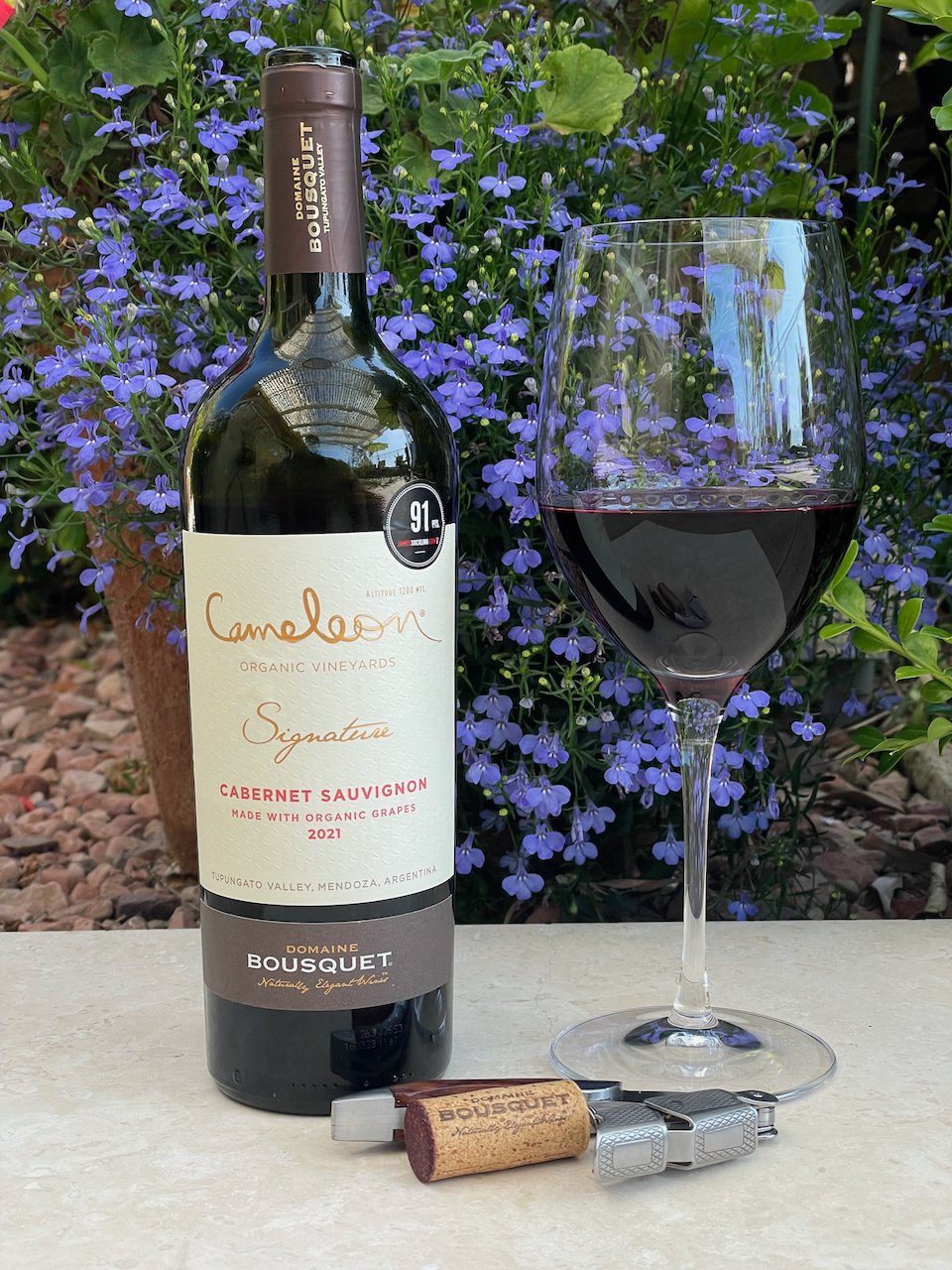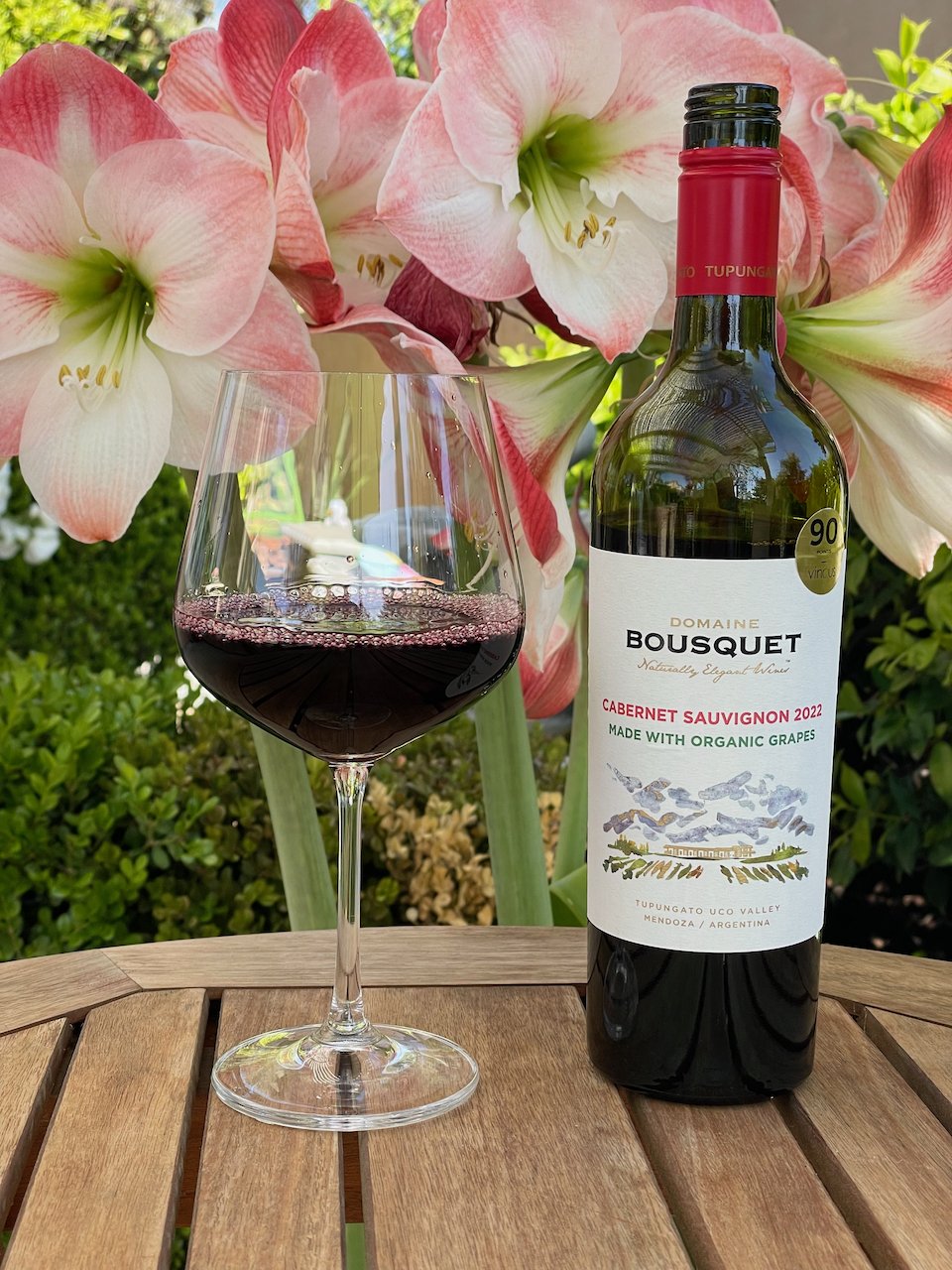2021 Domaine Bousquet Cameleon Signature Organic Cabernet Sauvignon ($20)
Like its namesake, Cameleon is the embodiment of adaptation to the environment. The label symbolizes the story of the Bousquet family, a fourth-generation family that left their native France after a long worldwide search for an idyllic wine growing region. Their search came to a natural conclusion in Tupungato where the Bousquet family tailored their extensive winemaking knowledge to the carefully chosen land. The European grapes such as Chardonnay, also adapted to the characteristics of the fertile Argentinean soil, creating the distinctive wine the family had sought.
This Cameleon Signature Organic Cabernet Sauvignon was produced form 85% Cabernet Sauvignon and 15% Malbec. They were hand harvested from organic vineyards and underwent cold maceration for 48 hours. It was then fermented with selected yeast for 10 days followed by 10 days of additional maceration. It underwent 100% malolactic conversion and was aged in contact with French oak for 6 to 8 months.
This wine is deep purple in color. On the nose it has medium-intensity notes of black fruit with herbal notes, some spiciness and a bit of dried tobacco. On the palate, this is a full-bodied Cab with flavors of black berry, black cherry and a hint of blueberry. This young Cab has bold tannin right out of bottle that settles down nicely after 1+ hours of decanting. It finishes smooth with just a bit of tartness. [ABV: 14.5%, Acidity: 5.55 gm/L, pH:3.67, Residual Sugar: 2.36 g/L]
This Cameleon Signature Organic Cabernet Sauvignon from Domaine Bousquet is big and bold and pairs well with grilled beef. And, at this great price, it’s this week’s Behind the Cork™ Wine of the Week. Cheers!
Disclosure of Wine Sample Submission: I received this sample at no cost for review. The opinions expressed are entirely my own.
Media Sample Provided by Domaine Bousquet






